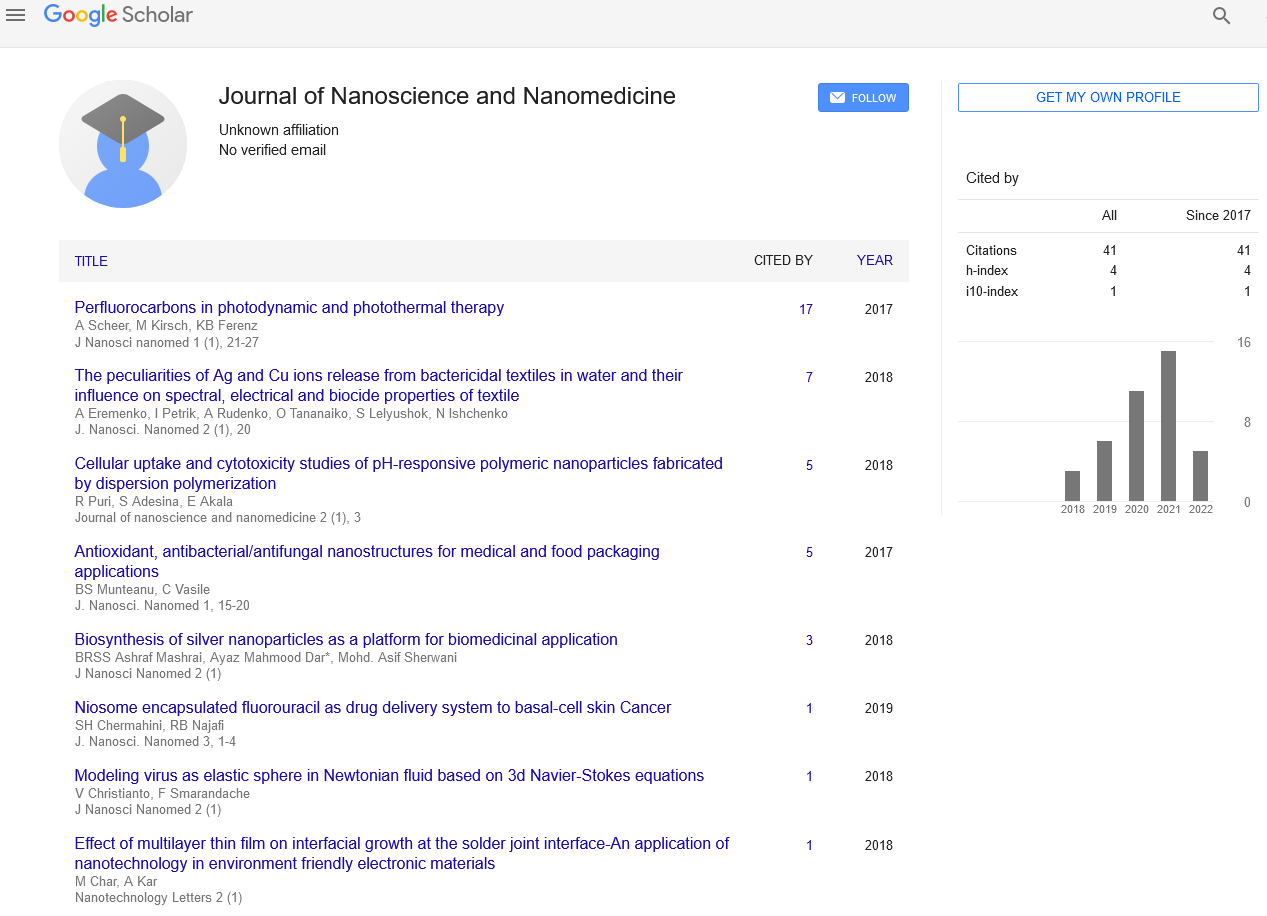Nanotechnology in Electrochemistry
Received: 26-Aug-2017 Accepted Date: Aug 26, 2017; Published: 30-Aug-2017
Citation: Filanovsky B. Nanotechnology in Electrochemistry. Nanotechnology Letters. August-2017;1(1):1.
This open-access article is distributed under the terms of the Creative Commons Attribution Non-Commercial License (CC BY-NC) (http://creativecommons.org/licenses/by-nc/4.0/), which permits reuse, distribution and reproduction of the article, provided that the original work is properly cited and the reuse is restricted to noncommercial purposes. For commercial reuse, contact reprints@pulsus.com
Nanotechnology applications in technique, analytical chemistry, environmental chemistry and life science allows to change ours conception about possibilities of chemical technology. One of significant applications of nanotechnology is electrochemistry. In electrochemistry, applications of nanotechnology can be endless: from sensors for monitoring of traces (analytical signal /current/ –at level 10-12 -10-7 A) to power sources such as accumulators and fuel cells (current range from 10-7 up to 102-103 A). In general, dynamic electrical current range is of 14 orders. It should be underlined that in all the cases we have deal with 3-D Nano-structures of electrodes. R&D work in the field allows dramatically increasing sensitivity of sensors and efficiency of power sources in comparison to traditional bulk electrodes.
One of main challenge of future is new energetics. Oil free, powerful and at the same time, ecological friendly energetic can change human's future. One of prospective in the field is fuel cell (FC) technique. The FC is unique because of direct transformation of chemical energy to electrical energy with high efficiency (up to 75-85%). In addition, Fuel cell has no moving internal parts, i.e. possess of high reliability. This design is making Fuel cells almost silent. Most of FC reaction products do not included air pollution such as CO and CO2. In general, FC is power source with zero to near-zero levels of harmful emissions.
Last 5-6 decades is characterized of big successes of the FC technology. High efforts of famous chemists as for instance Ostwald [1], Bacon [2], Grubb and Niedrach [3], Korovin [4], Bagotsky [5], Frumkin [5,6], Ballard [7] lied to appearance of new powerful FC systems such as H2/O2, CH3OH/O2, NaBH4/O2, N2H4/O2, NH3BH3/O2 and so on. Prospective and low cost methanol (ethanol)/O2 FC is now only in progress. Only H2/O2 FC successfully works in space, in submarines and in other military applications. However, mix H2-O2 is very dangerous because of explosion. The fact is reason to searching of hydrogen rich but non-explosive fuels. In addition, one of main disadvantages FC is necessary of noble metal catalysts. The main challenge now is to find new safety hydrogen carrier (fuel) and substitute traditional rare and expensive noble metal catalysts to low cost and efficiency metal or composite catalysts based on nanotechnology.
A R&D work in the field of FC is prospective on the way to oil free world. Several groups of researchers work in the field. Daihatsu motor Co researchers Tanaka, Yamada, Asazava reported about new non noble metal catalysts such as Co and Ni [8-13]. Tel-Aviv University (group prof. Patolsky) developed new non noble metal catalysts fuel cell based on ammonia-borane complex as fuel. It was shown that low cost Nano-Cu catalyst in the system works ca 1.5 times powerful to classical Pt-catalyst (EH2)/Nano-Cu =-1.45 V vs. (EH2)/nano-Pt =-1.0 V). At the same time electrode from bulk (compact) Cu do not shows this effect. It is only one example of effect of nanotechnology.
Examples shows that investigations in the field of nanotechnology is the way to find nontraditional solutions on the way to modern energetic. We spoke about only of the few part of dynamic range of current (from ~10-1 to 102A). Application of nanotechnology to completely current range gives us lot of additional possibilities. Also special interest is of investigations in the field in range of current less than nano-ampers. This is electrochemistry of electrochemical sensors. Control and monitoring of dangerous and harmful substances is necessary in all part our life in medicine, food control, air and water pollution control and explosives and narcotics control. Nanotechnology is the way to frontiers solutions can be very helpful not only in power sources technology and in sensors technology. Reports about nanotechnology in sensors design will be next part of my comments to applications of nanotechnology in electrochemistry.
REFERENCES
- Ostwald W. Energetische Grundlagen der Kulturwissenschaft (1st ed.) Leipzig 1909.
- Deltete Robert J. Wilhelm Ostwald’s Energetics: Origins and Motivations. Foundations of Chemistry 2007;9:3-56.
- Francis Bacon T, Young BN, Yanchuk BN. Symposium on fuel cells held by the gas and fuel division of the Amer. Chem. Soc. Fuel Cells, Sept. 1959, Reinhold Co 1960;2:51-77.
- Korovin NV. Fuel cell and electrochemical power units (Russian), Moskow, 2005 Korovin, Electrocatalysis of electrochemical devises. Russian electrochemistry 1993;39-448.
- Skundin AM, Tsirlina GA. V. S. Bagotsky’s contribution to modern electrochemistry, J Solid State Electrochem 2014;18:1147-1169.
- Bagotsky VS, Bogdanovskaya VA, Vassiliev YuB. Problems of Electrocatalysis. "Nauka" Publ. Moscow (in Russian), 1980;271p-320p.
- Bagotsky. Fuel Cells. Problems and Solutions Wiley, Hoboken. A N Frumkin Institute of Physical Chemistry and Electrochemistry, Russian Academy of Sciences. 2012;2:318p-320 p.
- Yu Tsivadze A. Russian Chemical Reviews. 2012;81:10
- Proskurnin M, Frumkin, A. A New Determination of the Capacity of the Electrical Double Layer. Trans. Faraday Soc. 1935;31:p110-p121
- Dolin PI, Ershler BV. Comparison of the H+ Ion Discharge Rate with the Rate of the Overall Process of Hydrogen Evolution on Pt. II, Zh. Fiz. Khim. 1940;14: 886-907.
- Tom Koppel. Powering the Future: The Ballard Fuel Cell and the Race to Change the World John Wiley & Sons; 1999.
- Yamada K, Asazawa K, Yasuda K, et al. Power Sources. J. Electrochem. 2003;115-236
- Patolsky F. Direct liquid fuel cell (DLFC) having Ammonia-borane or derivatives of as fuel, J. of Power Sources, 2014;246:423-429.





